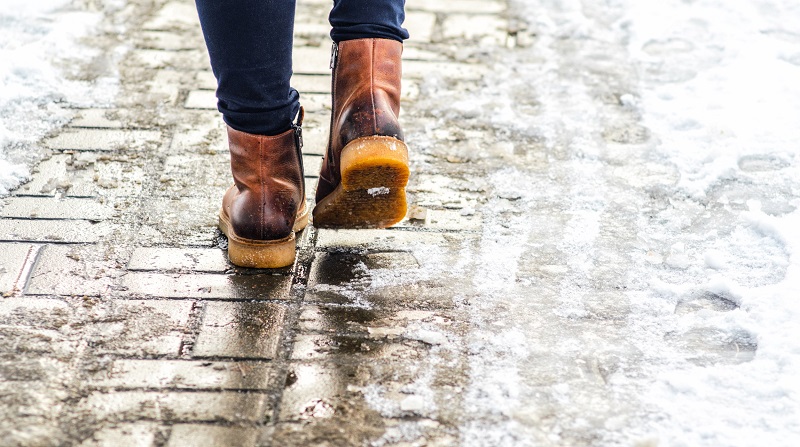The winter season brings joy, warm beverages, and glowing fires, but it also brings many challenges for homeowners. This is especially true for those less familiar with living in colder climates or those experiencing winter in a home for the first time.
The list of issues can be long, from frozen pipes to rising costly energy bills. Though being in the midst of winter may curtail some preventative measures, there is still much you can do to improve the winter-readiness of your home. Most importantly, understanding how your home handles severe cold temperatures, ice, snow and wind will help you prioritize what to fix in the near-term, and what can wait until the off-season.
This article explores some of the most common winter house issues homeowners may experience and how to deal with them.
Table of Contents
Also see these related Heating & Home Maintenance articles:
1. Frozen Pipes
Frozen pipes are undoubtedly the most common winter house issue. Subfreezing temperatures, inadequate insulation, and vulnerable pipe locations can all contribute to this common winter woe.

When the temperature drops below freezing, the water inside the pipes starts to freeze and expand, potentially causing the pipes to crack or burst.
Early detection is key to preventing extensive damage, so be sure to look out for telltale signs, such as:
- Reduced water flow or no flow
- Strange noises in the pipes
- Visible frost on exposed pipes
The best way to prevent frozen pipes is by insulating them typically with foam or fiberglass wrap. Different pipes may require specific types of insulation, so choose wisely to ensure optimal protection.

Since insulation acts as a shield against the biting cold, also adding proper insulation for your attics, basements, and crawl spaces will provide further protection for your pipes by creating warmer environments.
When adding insulation is not feasible, you can also let your faucets drip. This simple yet effective strategy prevents water from standing still in the pipes, reducing the risk of freezing, especially during exceptionally cold nights.

If you still encounter frozen pipes, call a plumber to repair them, as well as to get preliminary guidance on how to best deal with your immediate situation, such as:
- How to determine if you should you turn off your water completely or slightly run faucets to relieve pressure
- How to thaw your pipes safely and gradually
Also see:
2. Heating System Malfunctions
Any heating system failure can be a serious problem, especially during exceptionally cold winter spells. A malfunctioning heating system can cause homeowners discomfort and lead to more significant issues, like frozen pipes and a spike in energy costs.

The best way to prevent a malfunction is to have a professional inspection of your heating system at least once a year. This way, you can get ahead of any potential issues and fix them well before the cold season sets in and before they worsen.
Also see:
3. Roof Leaks
Another common winter house issue is the potential for roof leaks. When snow accumulates on your roof, it can melt and seep its way into your home through the smallest cracks or gaps. Regular roof inspections, repair of damaged shingles, and proper attic insulation can all help reduce the chances of roof leaks.

Roof leaks can also create ice dams. Clearing your gutters and downspouts can help prevent ice dams from forming. If you experience any leaks, addressing them immediately before they cause more damage is essential.
Also see:
4. Energy Waste
As the temperature drops, homeowners tend to increase their energy usage by turning up their heating systems, using electric blankets, and making warm beverages. This increase in energy usage can cause energy bills to skyrocket.

Furthermore, according to the Environmental Defense Fund, Americans spend hundreds of billions of dollars on energy every year, and more than half of it goes to waste.
To ensure you maximize the power of your heating and reduce energy waste, seal windows and doors with weather stripping. Ensure that you seal your heating ducts and vents and use energy-efficient heating systems. All of these ideas will help limit energy waste.
Also see:
5. Icy Walkways
Winter weather can cause walkways and driveways to become icy, which is dangerous and a significant liability risk for homeowners. Clear your walkways of any ice or snow buildup regularly. You should also use de-icing solutions, salt, or sand to keep your walkways safe for everyone.

Regarding liability, placing prominent warning signs near known slippery spots can also help protect passersby, as well as reduce your responsibility for any mishaps. This proactive approach of letting visitors know of pre-existing hazards is a key tenet of the Privette Doctrine that provides legal protection to homeowners when hiring contractors.

Also see:
Closing Comments
Frozen pipes, heating system malfunction, roof leaks, energy waste, and icy walkways are some of the most common winter house issues that homeowners may experience. By taking proper care of your home and maintaining it regularly, you can avoid these issues and enjoy the winter season without any worries.

Additional Heating & Home Maintenance Articles
- What Homeowners Should Know About Home Insulation
- 5 Preventive Plumbing Tips When Hosting Guests at Home
- Increase Your Home’s Energy Efficiency with Daylight Harvesting
- Building Technologies for Disaster Resistant Homes
- Related Topics: Winter | Cost Savings | Energy Efficiency | Utilities
| Purgula is reader-supported. When you click on links to other sites from our website, we may earn affiliate commissions, at no cost to you. If you find our content to be helpful, this is an easy way for you to support our mission. Thanks! Learn more. |







